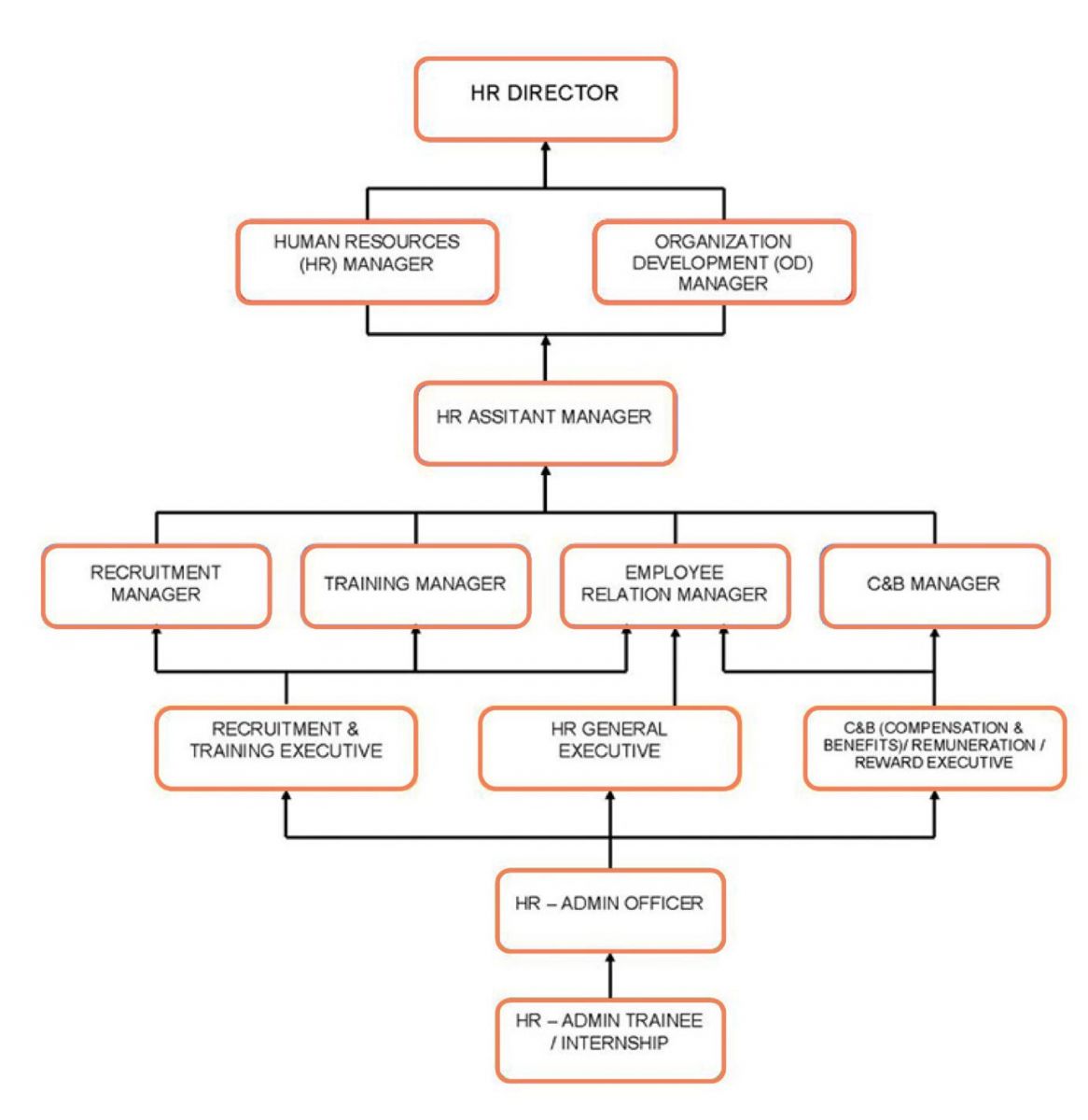I. What is the career path for employees?
The career path, also known as the promotion route, is a map to orient the development titles that employees can achieve at each level, scientifically built based on the evaluation criteria. proposed by the enterprise.
Eg:
For the position of Administration, there will be titles from low to high: Administrative Assistant — Executive Assistant — Office Manager
With Branding there are: Ad Account Coordinator — Assistant Account Executive — Account Executive — Senior Account Executive
The career path helps employees visualize all the paths to the highest possible job title in a career. The career path not only helps employees see their career growth potential, but also sets clear milestones to motivate work.
The criteria to be considered when summarizing promotion titles include:
- Career aspirations
- Skill
- Expertise
- Experience
- Personal talent
- Achievements
Based on these factors, management will evaluate and consider promoting employees after a certain period of time.
II. The role of the promotion roadmap for businesses
The construction of a specific, detailed and reasonable career path plays an important role for the business itself in general and the staff in particular:
1. Create a healthy competitive environment, improve work performance
When looking at the career path, each employee will know what he or she needs to do in order to achieve the set goals. From the requirements set for each position, employees will strive to achieve, thereby creating a healthy competitive environment with every employee striving.
Through that, employees will be more productive and bring many good results to the business.
2. Minimize turnover rate
Imagine a company without a clear promotion or bonus criteria, where will employees get their motivation to strive? Such a company will easily cause stagnation and loss of working energy in employees.
More seriously, not building a clear career path also increases turnover and causes great losses to the sustainable development of enterprises. Therefore, a business with a clear, long-term development vision will help retain employees longer-term.
3. Enhancing cohesion
The connection between employees and leaders, between personnel and businesses will be further strengthened with a promotion route that makes employees satisfied and reasonable with the market situation.

4. Retain and attract talent for businesses
The reality is that many growing businesses are struggling to attract top talent. And a well-promoted, streamlined career path can play a big role in attracting talent.
Being able to build an effective career path for employees to develop will help businesses improve their image and position. As a result, a source of good, technically qualified and highly qualified laborers find themselves in enterprises to cooperate and work. At the same time, talented employees will also voluntarily stick with and devote longer.
5. Improve the quality of the management team
By investing in recruitment and building a detailed, transparent career path, you will build a more diverse and dynamic leadership team.
Enterprises should focus on training veteran employees who stick with the company for a long time to create a diverse and dynamic leadership team. Not to mention this also helps businesses reduce the cost of recruiting new employees from outside for leadership positions.
III. 4 steps to build an effective business roadmap for businesses
1. Create and update the position chart of each department
No employee will be able to accurately imagine his or her promotion opportunities if it is not mentioned by the business/employer from the beginning. This is the simplest way to help employees see the path to advancement in their functional area.
Only a basic diagram or graphic is needed to illustrate potential location changes for any particular business function (e.g. marketing, sales, HR, customer care, etc.).
This company title chart is the foundation for an employee's career orientation program, as it highlights an employee's career development opportunities in a way that's easy to understand, track, and change if needed.
2. Update job description of each position in the roadmap
Next, you should develop descriptions for each position in your career path, or position profiles, which are detailed descriptions for the positions that highlight the career path.
For each position, you need to outline and document a description of your core duties, skills, and general requirements. To add clarity to the career-oriented program, some KPI requirements need to be added.
This description will be the key to locating low-level employees, considering whether they are qualified to take on a higher position in a definite time in the future.
3. Define performance benchmarks for each position
In this step, you need to define the performance standards the business needs in each job position. That is, employees or personnel in any position who want to rise higher need to clearly define what they will have to accomplish when in that position.
You need to document the behaviors and productivity outcomes of your top employees; Next, take that as a standard for all other positions, thereby building an effective promotion route for employees.
4. Organize a combination of training and employee development
To motivate employees on the promotion path, enterprises should equip more internal training courses to disseminate information and practice necessary skills. For example, leadership training, cross-functional training, international exposure, etc.
For training, if you are a manager, don't hesitate to ask employees how they want to be trained, because they are the key human resource that the career path in general and the training program specifically towards.
Above is all the information about the promotion path that we want to share with our readers. And as shared above, the software solution is a great choice












Replies to This Discussion